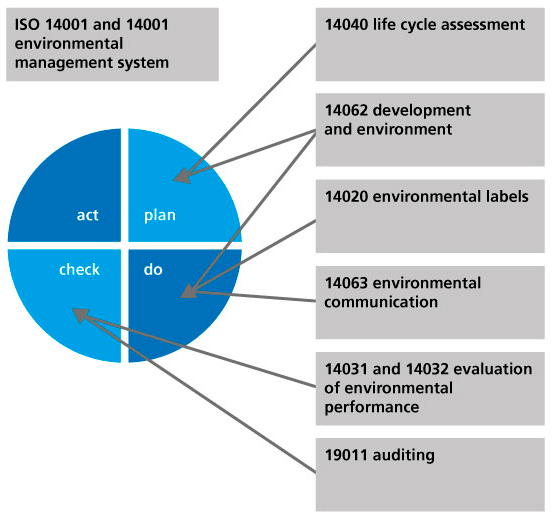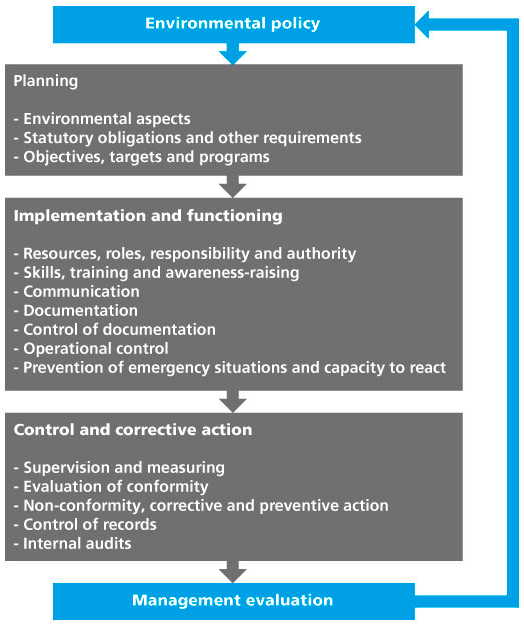Environmental management standard ISO 14001
The environmental management standard ISO 14001 defines the internationally recognized requirements relating to an environmental management system. It applies both to production companies as well as service providers.
ISO 14001 relates, logically and in terms of many sectors, to ISO 9001 (documentation, continual improvement, employee training, internal audits and management evaluation). It is therefore wise to combine or integrate both systems.
ISO 14001 is part of a family of standards that defines many other standards which deal with specific environmental questions. This includes environmental assessments, environmental indicators, the evaluation of environmental performances, etc.
Source: Umweltmanagement für kleine und mittlere Unternehmen, Hans-Jürgen Klüppel, Beuth Editions, Berlin, 2006.
Initial situation for introduction of an environmental management system
In order to introduce an environmental management system, the following need to be established:
- The company’s environmental policy (environmental targets)
- Environmental targets
- The company’s environmental program
Continual improvement must be achieved by regularly assessing the environmental targets set and the environmental management system.
Continual improvement
ISO 14001 focuses on the process of continual improvement. This process is based on the method of plan, do, check, act (PDCA) – see also the quality management system according to ISO 9001 – and includes the following aspects:
- Plan: development of objectives and processes with a view to applying the organization’s environmental policy.
- Do: implementation of processes.
- Check: check processes in accordance with statutory and other requirements and also the objectives of the company's environmental policy.
- Publication of environmental policies in the form of a report is optional but inspires confidence.
- Optimize – act: if necessary, processes must be corrected (adapted).
Source: Umweltmanagement für kleine und mittlere Unternehmen, Hans-Jürgen Klüppel, Beuth Editions, Berlin, 2006.
ISO 14001 does not define any absolute requirement concerning environmental performance. However, fulfillment of the obligations the organization has fixed in the context of its environmental policy is encouraged.
Progressive application of an environmental management system according to standard ISO 14005
SMEs often dread introducing an official environmental management system due to the corresponding cost. But the introduction of standard ISO 14005 in 2010 removed this obstacle, because it provides companies with a framework and advice for introducing, developing and maintaining, in phases, an environmental management system meeting the requirements of ISO 14001. It also provides them with tools for evaluating their performances in this area.







